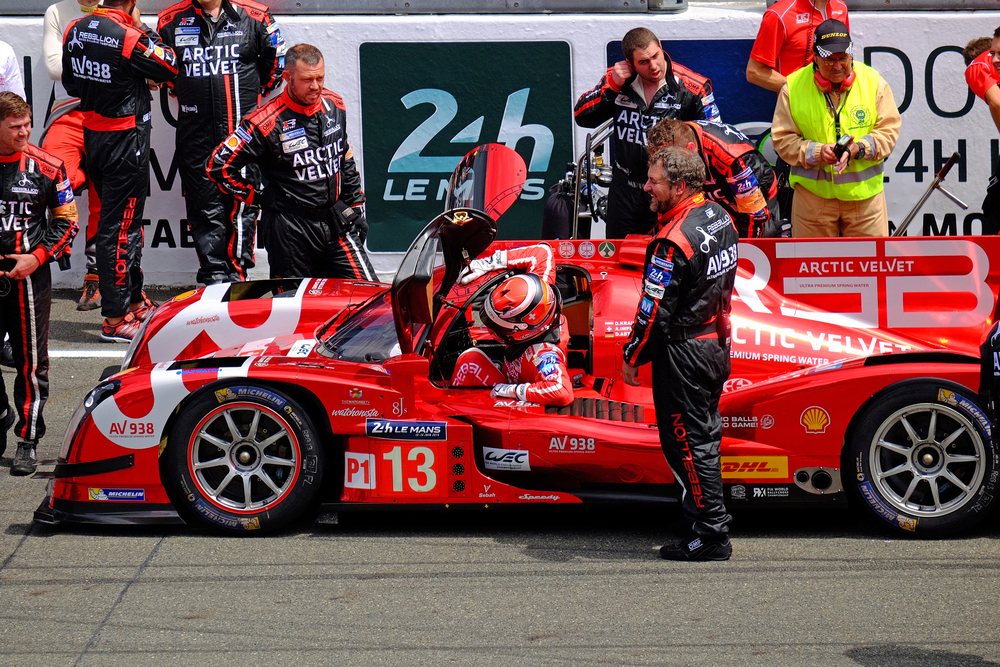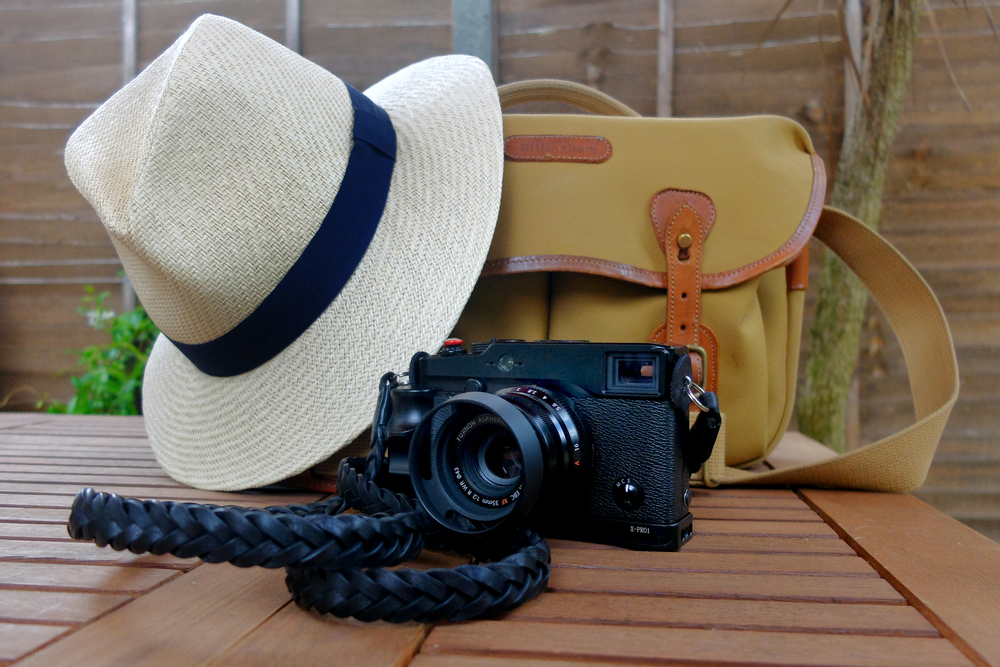Our friends at DP Review have published an illuminating report of an interview with Yuji Igarashi, general manager of Fujifilm’s Electronic Imaging Division, Takashi Ueno, manager of Fujifilm’s Electronic Imaging Group Sales and Marketing and Optical Device and Electronic Imaging Products Divisions and Ryouichi Takamoto, Optical Device & Electronic Imaging Products Division, Sales and Marketing Staff. The full article by Barney Britton can be found here and I would encourage you to read it.
There seems to be a bit of internet angst over some of what is reported as having been said, with three things in particular attracting comment, both pro and anti:
“The X-Pro series are special cameras for snapshooting, reportage and so on. But the X-T2 is a multipurpose camera, so we’re trying to sell the X-T2 to DSLR users, compact camera users—all photo enthusiasts and professional photographers.
“(On the lack of a touchscreen on the X-Pro2 and X-T2) “One reason is that a key feature of the X-series is dial operation. And dial operation and touch operation are completely different, so combining them could be confusing.”
and
“In future our goal is to satisfy everyone”

Best for last
Let’s just examine each of those in turn, saving the best for last.
- People appear to have reacted badly to the use of the term “snapshooting”, taking it as pejorative. Those who object to the wording are either being deliberately obtuse or have skins thinner than a skinless sausage. Do they genuinely think that the X-Pro 2 is targeted at gormless amateurs who care not for composition or exposure? That it is designed to appeal to those who, in film days, used one roll a year with a Christmas tree at either end and a beach in the middle? As an X-Pro1 and now X-Pro2 user I see this quote as trying to reference that the X-Pro series is tailored for and targeted more at the snipers of life than the machine-gunners; the rod fishermen, not the users of nets. More of that in a moment. Let’s move on to:
- If one believes the permanently offended on the internet forums, touchscreen operation is rapidly becoming an article of faith. No manufacturer should dare to release a camera today without it. The main argument seems to come from those who hold up Olympus and Panasonic as manufacturers who have managed to combine dials and touchscreens to deliver some form of “ultimate user interface”. Jolly good for them, I say. If they have it right and Fuji has it wrong, we will see the impact on sales, won’t we? In a few short months, Fuji will be bankrupt and Olympus and Panasonic will be bestriding the world as twin collossi, sweeping all before them.
Or not.
Personally I go out of my way to avoid touchscreens and by the sound of it I am neither alone, nor uncatered for.
- Now let’s consider the point that seems to have aroused most ire—Point No.3: “our future goal is to satisfy everyone”. This has been taken by the permanently offended (see above) to mean that Fuji is aiming to produce some form of “Volkskamera” that will be all things to all men or, as I have seen sneeringly pointed out multiple times already, a “jack of all trades”. Maybe, just maybe, this is the point that has lost most in translation. I take it to mean that Fuji has ambitions to offer a range of products to address the needs of a range of customers. Nobody accuses Mercedes, for instance, of being a “jack of all trades” and yet they produce cars for multiple market niches to meet multiple needs.

Takeaways
There are, I think, two takeaways from Barney’s interview. The first is that, to an extent, Fuji are struggling—in marketing terms at least—with a problem of their own making. In naming the X-Pro1 they created a rod for their own backs. By their own definition the “Pro” is “Professional”, so by inference any other camera of the X system is not.
I think that this is a result of the system having evolved rather than having been planned from the outset—the X100 spawned an interchangeable lens cousin, the X-Pro1, then the X-Pro1 begat a simpler and cheaper model, the X-E1, then the SLR-handling market segment was addressed by the X-T1, and so on.
Fuji have tried to redress the balance in their announcements last week by according the X-Pro2 and X-T1, what they refer to as “double flagship” status. This makes their intention clear, but simply and frustratingly provides another bone for the trolls to gnaw over.
The fact is that the X-Pro2 and the X-T2 are both fine cameras but they are aimed at—and appeal to—two different market segments. I have an X-Pro2, but have limited interest in an X-T2. I had an X-T1 and a fine camera it was to be sure, but it received limited use compared to my X-Pro1. I like the “rangefinder” form factor and it suits my personal shooting style and circumstances. I like not having a “pentaprism hump”, and I like having the camera not obscuring my face when I shoot. I like the immediacy of the optical finder, and I like to be able to see what’s going on outside of my frame lines. I shoot predominantly with primes. I shoot in a considered manner, using single AF, spot focus and single frame advance. I snipe at a subject rather than hose it down. In short I am the target demographic for an X-Pro.

Don’t stop talking
Occasionally I shoot motorsport, cricket, rugby, airshows, wildlife—and for those applications no doubt an X-T2 would be better suited—but I don’t do those things enough to make it worthwhile my having a dedicated body for the purpose.
The second takeaway is that while Fuji is happy to take the time to explain, and to share their strategy and philosophy, they cannot force people to understand. I have a T-shirt, a gift from my son, which sums it up nicely; it says “I would explain it to you but I don’t have any crayons.” If anyone from Fuji reads this assessment I would simply say this: Don’t stop talking—it is refreshing and very welcome—but don’t be surprised when those who don’t want to understand don’t get it. I’m happy with what Fuji are doing. I feel that I am both catered for and that I understand—and appreciate—their future trajectory. Maybe I’m the odd man out, but I’d rather be so than permanently offended.
_________________
- You can find more from Bill Palmer at Lightmancer
- Subscribe to Macfilos for free updates on articles as they are published. Read more here
- Want to make a comment on this article but having problems? Please read this


Nice article Bill
I’m not a fan of Fuji, but I very much admire the way they have taken a consistent and logical line and followed it through with real enthusiasm.
Funny thing about touch screens . . whilst I agree that using them for menus is really a PIA (with the noble exception of the Leica T which is designed around it’s touchscreen), I find them excellent for reviewing images as one would on a phone – much nicer than buttons or dials for zooming in / changing images.
But the real truth is that interfaces are very much a thing of personal preference, but it seems that only Fuji and Leica are really thinking about this at the moment, rather than throwing everything including the kitchen sink at the problem.
All the best
Bauer hockey has 3 lines of sticks. Each line has its flagship model. They serve different purposes.
I think this is very well put and I can’t agree more. What’s in a name anyway? Let’s see the results!
I went to Yosemite National Park, CA and took a camera that is a decade old and it still captured some pretty good shots. Of course I had other cameras as well.
Thank you for sharing your thoughts!
"That it is designed to appeal to those who, in film days, used one roll a year with a Christmas tree at either end and a beach in the middle?" – LOL
Hi again Bill and thanks for sharing your musings on this…:)
I only have a couple of thoughts:
First, rather than rod, I like think it’s analogous to fly fishing, greater skill, patience, and environmental consideration is applied. (bit of outdoor snobbery for colour)
Next, I hate compromise when it’s not really necessary… the XP2 should have NO video – it’s a still camera please & thanks (again, just MHO)
Last, I really don’t care what they call it, Pro, Toy, Bottle Opener. I care about it’s capacity and my ability to use it without effort. Leica never used any moniker of this type (ya, I know I owned an M-P too but note they never say what the ‘P’ stands for) and yet they were all used by all shooters for all types of work. I have no issue with the current naming schema and don’t think it plays a significant role in sales or usage. And as for marketing, well we are learning to ignore that stuff anyway 🙂
Always worth popping by Bill, thanks again 🙂
Bradley
I would say the fact that Xpro-2 includes a capacity for "snapshooting" is one of the definite strengths of the camera. I hope Fuji remembers, not pursuing "everybody" is exactly what has placed them where they are.
-I kind of thought "snapshooting" might be one of those "lost in translation" things. It was confirmed in the DP Review comments:
"Snap shooting is pose shooting. It’s a Japanese mangling of English which doesn’t make sense out side of Japan."
-I think they made a mistake by not implementing a touch-screen, but I’m not crying about the XT-2 not having one. On the Olympus Pen-F – the touch-screen is VERY useful.
-As one who prefers the rangefinder style (I do too), I’m surprised you’re not mentioning the custom AF-C capabilities not being carried over to the X-Pro2. As an X-Pro2 owner, I’m disappointed they are not porting them over. I’m also disappointed they are not porting over the increased focus points. I don’t shoot a lot of fast moving subjects, but it would be nice to have when I do. This is supposed to be a flagship camera. I’d like them to keep it that way.
Frankly I hate touch screens so thank you Fuji! Don Morley
I bought the Panasonic GF2 with touchscreen and little in the way of dials when it first came out in circa 2010. Though it was a nice little camera, the touchscreen was a real PITA.
Maybe I’m just a bit slow on the uptake, but, for me, grinding through the GF2 touchscreen actions and trying to remember which menu nested in which, and what each option did, and so forth, was akin to knowing and remembering in every detail the menu structures and actions in my X100T or X30 setup screens. I just can’t, and won’t, do it, and definitely not "on the fly".
The other big problem with touchscreens is that you have to take the camera from your eye, pore over the screen (in hope that you can easily make it out-not always possible) and then poke away with, in my case, a large blunt-ended digit. Pulling little aperture or speed sliders requires a degree of concentration and finesse to get them just so.
The dials and controls on my X30 and X100T are ideal, do everything I want crisply and precisely, the EVF shows me what I want to see, and I generally only look at the screens on these when I want to review photographs. That’s the joy of these cameras, and Fuji would be making a big mistake if they get carried away with touchscreens on the X series.